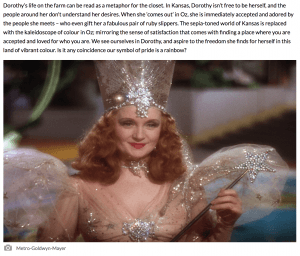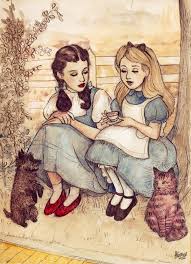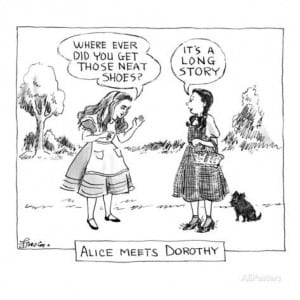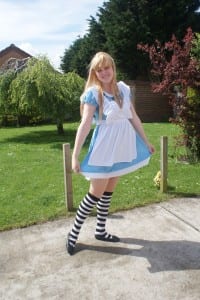The Body As Archive: Will to Re-enact and the Afterlives of Dances – André Lepecki
“Rather than think of re-enactments as conceptual frames for a choreographer’s “inevitable” failed efforts to succeed in copying an original fully. I would like to propose the will to re-enact as a privileged mode to effectuate or actualise a work’s immanent field of inventiveness and creativity.” (Lepecki, 2010)
Lepecki talks of our willingness to re-enact former works, using our bodies as an archive in reinventing the work to present it to a new audience, who may appreciate it in a different way. This will to archive is an aim to bring something new to the work, in a cyclical manner there are always “impalpable possibilities” in that there is always something new which can be added or changed or explored within the work. This, however, brings up issues of authenticity, is the new work still authentic to the original? Or is it a new entity in itself?
Unmarked: the Politics of Performance – Peggy Phelan
Ontology is existence, but performance cannot be saved. Phelan argues that performance only comes into existence once is has disappeared. This means that because a performance happens at a certain time in a certain place, it can never be repeated. Even if the exact same content was performed identically, it is still entirely different. There may be a different audience, the performer may take a breath in a different place. “it can be performed again, but this repetition itself marks it as “different”” (Phelan, 1993). Any re-enactments or re-workings may be based on an original performance but every time is is redone it becomes something different.
Reconstructing the Dance: In Search of Authenticity. The Body, Dance and Cultural Theory. – Helen Thomas
Thomas talks of authentic vs interpretive. By this she refers to the authentic as an imitation of an original vs the interpretive as a generation.
In the same thinking as Phelan she quotes Siegel as saying “Dance exists at a perpetual vanishing point. At the moment of its creation it is gone… [it is] an event that disappears in the very act of materialising” (1986). She argues that some work should not be changed due to its historical ties whereas other work has a more universal underpinning which means that it can be made relevant to audiences over several different situations, be it variations in time and space.
Enduring Documents: Re-Documentation in Marina Abramović’s Seven Easy Pieces – Lara Shalson
Marina Abramović relied on the documentation of the original works in order to create her Seven Easy Pieces. On many occasions this was simply photographs. This Shalson argues gives something from which to work, a glimpse of the original but nothing to definite that limits the imagination allowing the development. Although we assume these documentary photographs appear to prove the authenticity of a performance, it is not factual or a complete record of the performance. A picture captures a millisecond of a performance which in the case of Abramović lasted for 7 hours. However in contrast to the photographs which Abramović had to work from, each of the Seven Easy Pieces were documented in film, although not in their entirety. However these films give more of a glimpse of the work, as well as the reactions of some of the audience members and their responses to what they were seeing, hearing or witnessing.
Seven Easy Pieces and Performance Document(ation)s – Benjamin D. Powell
“Every act of writing about performance is an act of memory and of experimenting with different forms of narrating the experience of remembering.” (Powell, 2010) Every person who has seen a performance may remember it slightly differently, they may not all have witnessed every moment or responded to what they have seen in the same way. In this respect, their writing of their memories combined with that of others can help to create a more rich and colourful account of the work, where personal reflections and inputs help to single out certain moments or push the reader to empathise with a moment in a particular way. Powell describes how, through using a body to connect to the memory of a past work, Abramović is allowing the audience to exist in the past and the present simultaneously. The artist is almost a time portal between the two pieces, allowing the audience to be a part of a memory as well as a re-birth through the re-generation of the original piece.
Thomas McEvilley’s interview with Abramović revealed her desire to create and intense connection with her audience. Something which I have tried to carry across to my own re-work of her seventh piece. Abramović said “the only thing that’s necessary is that you create the space and time field” (1998). Providing you give the audience these basic requirements, a connection can be made. You assume that the audience come with a willingness to accept what they are about to see. This willingness should then be translated into the connection between the artist and the audience as they are both appreciative of the other for either providing the entertainment or the desire to view it.
Body – Jonathan Pitches and Sita Popat
The body is a physical entity that we use and live in every day. The body does things without us noticing, we live, we breath, blood is carried around our veins and arteries, we inhale oxygen and expel carbon dioxide. However through performance, the body becomes something that we can use as a representation of something else. We can become another being, be it human or an imitation of another creature, animal or something entirely inhuman such as a physical object. “The body as a medium of representation does not mean anything in itself: it only stands for a text, a sign, a symbol or an ideological construct of something else. (Csordas, 1994:9).
“To perceive is to ‘understand implicitly, the effects of movement on sensory stimulation'” (Noe 2004:33)We perceive the world on a daily basis. We may not always realise but we are constantly perceiving situations, locating the familiar with the schemas already existing in the brain and finding a place for the unfamiliar, categorising what we experience within the giant filing cabinet that is our brain.
The body is not a finished process, it is constantly evolving. The body is continually making chemical exchanges, building new cells, growing new hair and nails, repairing itself and learning.
Performances can transport you into a different world. You are so drawn in to what you are seeing that the real world around us no longer exists. However, there are still things that can tear the illusion away, bringing us back to reality with a large thud. For example, the tall person sat in the row in front who manages to block your entire view with the back of their head, or the person who gets hungry half way through the performance and rustles the sweet packet trying to curb their craving, or the person who has such a hectic social life that they feel the need to check their phone half way through the performance. However we can also be brought back to the knowledge of our bodies through the deliberate strategies of immersive performance work. The artists may want the audience to acknowledge their bodies, it may be as a way to make them notice something that they may never have previously.
Space – Jonathan Pitches and Sita Popat
“Scenography is the seamless synthesis of space, text, research, art, actors, directors and spectators that contributes to an original creation.” (Howard, 2002:130). Through the layering of all of these different elements, the scenographer is able to create a new place to fill the void that is behind the proscenium arch of the theatre. However site specific work offers more elements for the scenographer to work with. They can choose to work with what is already within the space, or controversially to juxtapose it.
Once the space has been designed and the contents arranged, careful consideration should be taken to the placement of the audience. I have previously considered the placement of the dancers on the stage, in accordance to the amount of power I want the arrangement to have. However I have not given much thought the audience. In a traditional theatre, the seats are fixed, however in a different space, the audience can be placed in accordance to the relationship which should be drawn between them and the performer. They may be higher than the performer, having dominance, or below as more weaker characters, or they may have the performance in a promenade, allowing the audience to move around, a style which I am considering for my own work.





Recent Comments